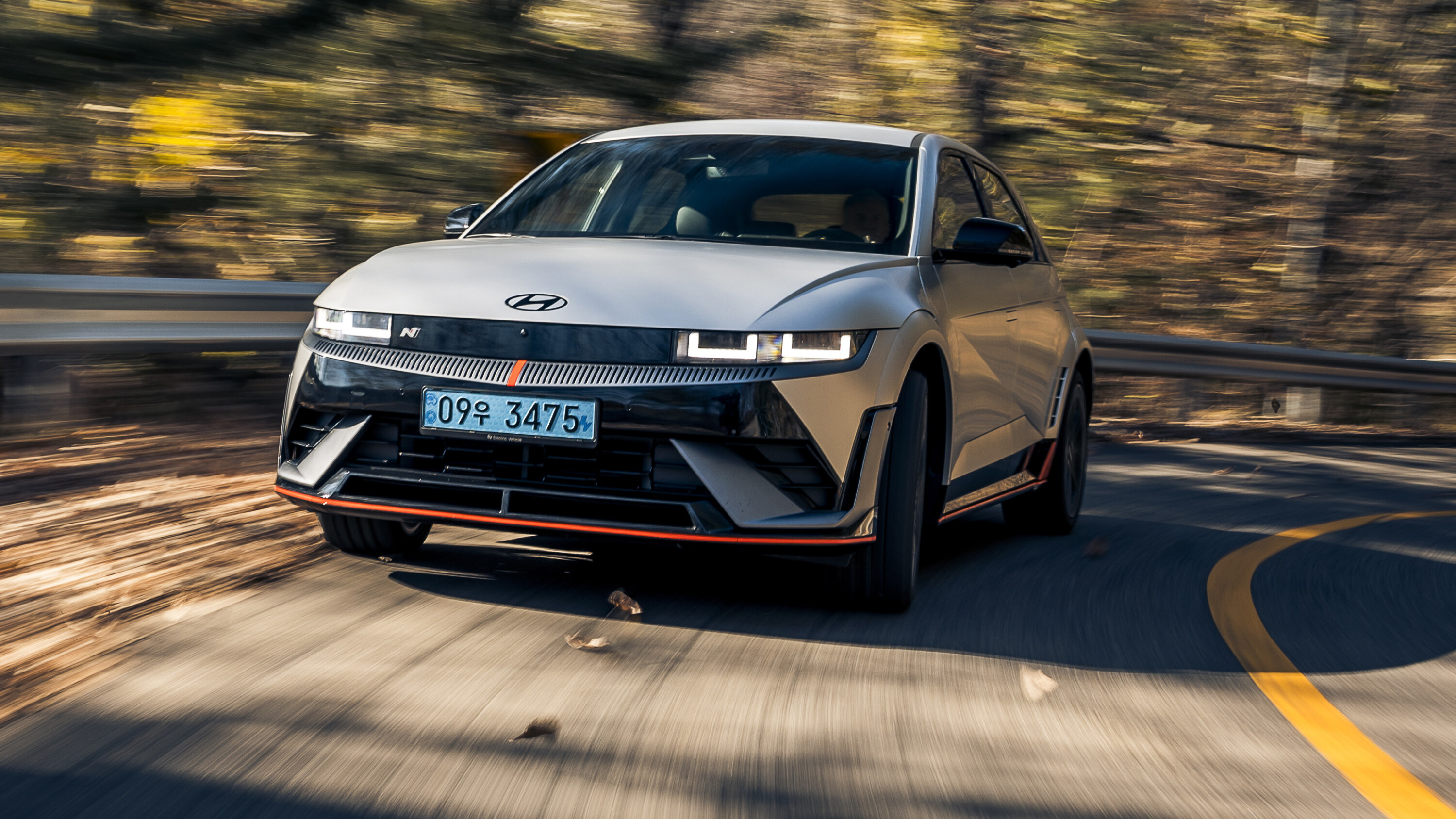Things we like
- Taycan Turbo-rivalling performance
- Enjoyable handling defies 2.2T weight
- i30 N powertrain mimicry adds to involvement
- Extensive driving-experience customisation
Not so much
- Multiple modes and menus can be overwhelming
- Efficiency likely to be a weak point
- Price tag far more than just a 'step up' from an i30 N
It’s six years since the i30 N emerged as a hot-hatch that finally convinced keen drivers Korea could build a bona fide performance car.
The IONIQ 5 N, however, has a different mission: to persuade highly sceptical petrolheads that an electric car can be similarly entertaining.
The regular-sized five-door and the oversized hatchback – or crossover if you prefer – share a mutual project leader: Albert Biermann. There’s some full-circle symmetry, too, as where the i30 N was the German’s first N car, the IONIQ 5 N will be the 66-year-old’s last before a belated retirement.
Biermann has a clear, no-nonsense view on performance cars of the future: they will/must be electric and there’s little point mourning combustion cars.

The 5 N certainly looks the part. Its stance is aided by a 2cm-lower ride height and a 5cm-wider body necessitated by 275mm-wide Pirelli P Zero rubber.
Aerodynamics-focused appendages – front splitter and rear diffuser –add 8cm to the 5’s overall length and modify its silhouette (along with an extended roof spoiler).
There are more exterior differentiators to ensure it’s impossible to mistake the N for a regular IONIQ 5.
Bright-orange striping features on all four sides, including the skirting line that expands into an aeroplane-style tail-fin by the rear wheel arch. There are more vents for battery and brake cooling, and the first electric N sits on boldly styled 21-inch forged-alloy wheels.

Nine palette options include two exclusive colours: Soultronic Orange and the Performance Blue famous from other N models.
Performance Blue is also available as a matte finish (along with Atlas White) for an extra grand. Otherwise, a $2000 ’Vision’ panoramic roof is the sole option.
Changes not so visible include revised suspension and steering tuning, upgraded front and rear subframes, and a body-in-white that has been stiffened through more than 40 additional welds and an extra 2.1 metres of adhesives.
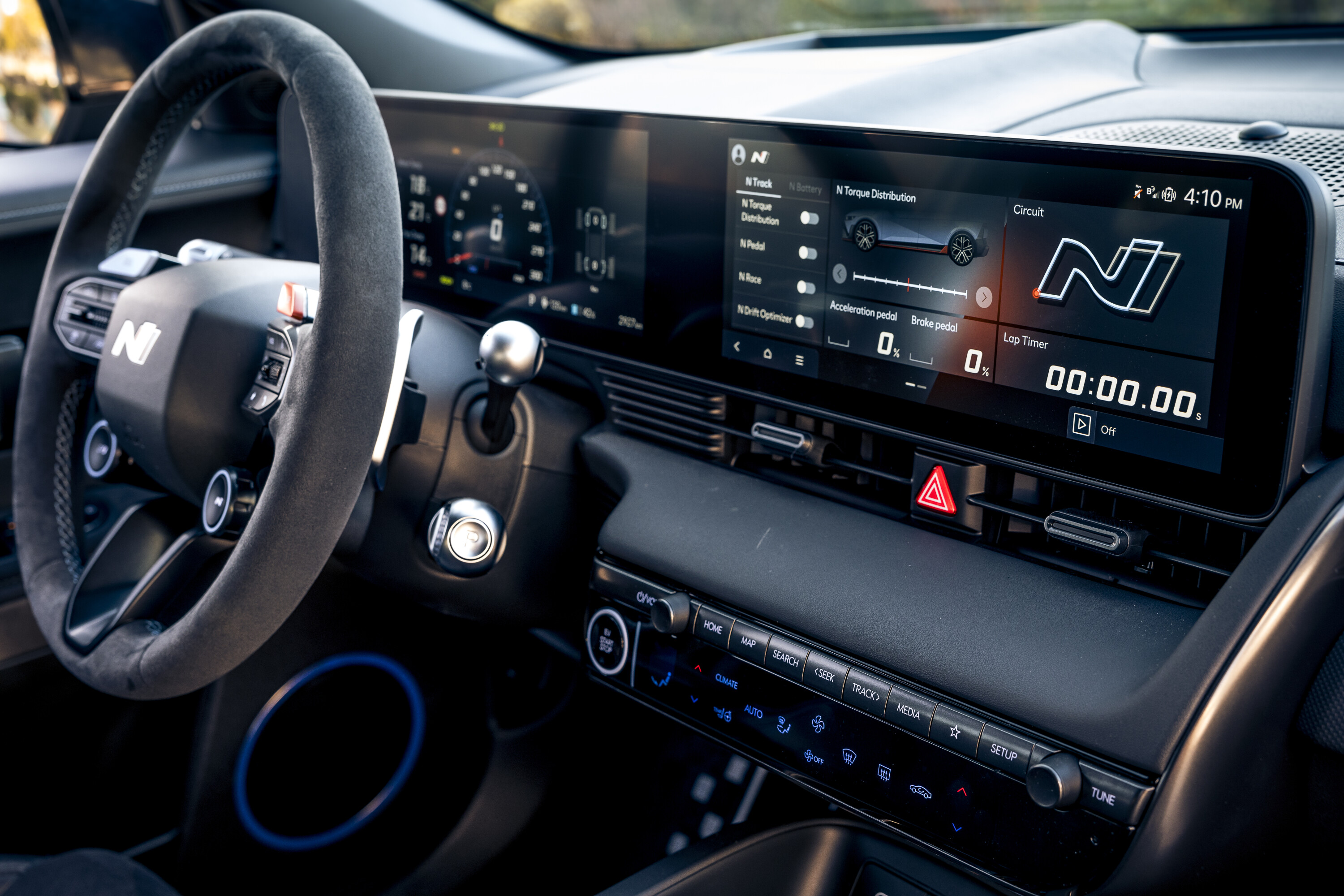
About half of the modes are designed or recommended for track use
While the 5 N shares its 800-volt ‘e-GMP’ architecture, it adopts a bigger, 84kWh battery and its dual motors – creating the first all-wheel-drive N vehicle – produce a combined 448kW and 740Nm. Or 478kW and 770Nm via a temporary Boost mode.
Called N Grin Boost, it’s one of a dozen or more N-labelled features or functions.
We’re already on a freeway out of Incheon, near Seoul, without any time for familiarisation with the touchscreen menu, and initially trying to locate specific functions is N-Oying.
About half of the modes are designed or recommended for track use, which at least simplifies matters, and it’s not too long before we’ve figured things out.

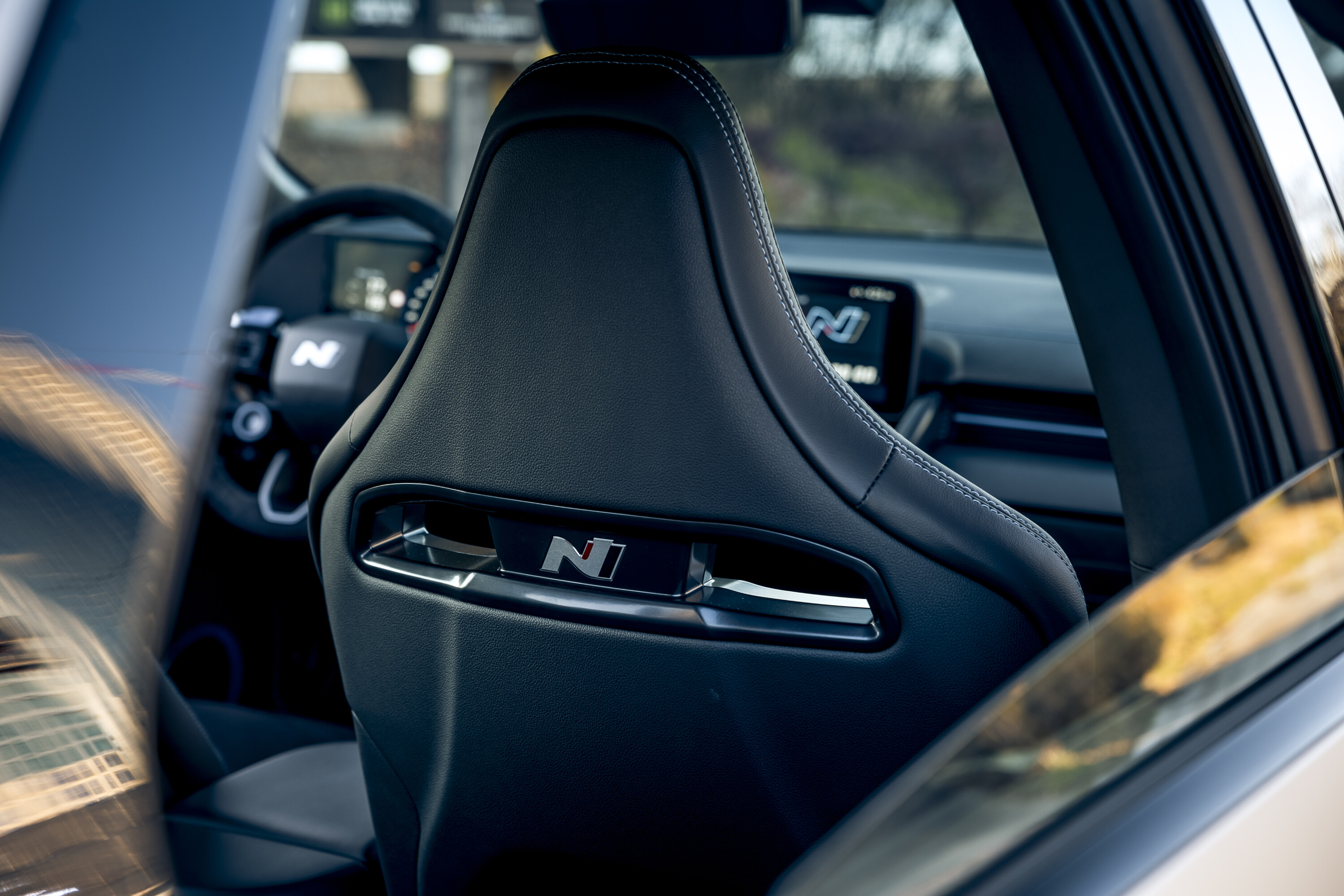
It’s here that we should point out that while we’re in Korea during the 5 N’s international launch, we broke free from the official program for an exclusive road drive.
The downside is that we missed out on a racetrack experience to try out some of the more extreme features, such as N Drift Optimiser and N Launch Control (both self-explanatory), as well as N Pedal (an extreme-regen-braking interpretation of lift-off oversteer, essentially).
There’s also N Race, which includes Sprint and Endurance options (respectively, to go full power for a limited time or have limited peak power for longer lapping), and N Battery Conditioning that can prep the battery temperature for either the fastest acceleration possible (30-40 degrees) or sustained lapping (20-30 degrees).
The upside is that we got to spend a good couple of days with the 5 N, with full freedom to explore some suitably curvaceous roads.

A glorious, hillclimb sequence of hairpins is up first, and is equally savoured by our accompanying video crew and Wheels photographer Ellen.
By now I’ve long located the menu pages for Customisation 1 and 2, which via the left ‘N’ button on the steering wheel provides a shortcut to the driver’s favoured settings.
I opt for my Customisation 1 set-up, which has steering, electric motors, suspension and electronic limited-slip rear differential in their most aggressive settings, and the ESC in Sport mode.
And for the car’s two most distinctive features – at least in our view – we’ve engaged N e-Shift (via the right-side N button on the steering wheel) and selected ‘Ignition’ out of three options provided by N Active Sound Plus.
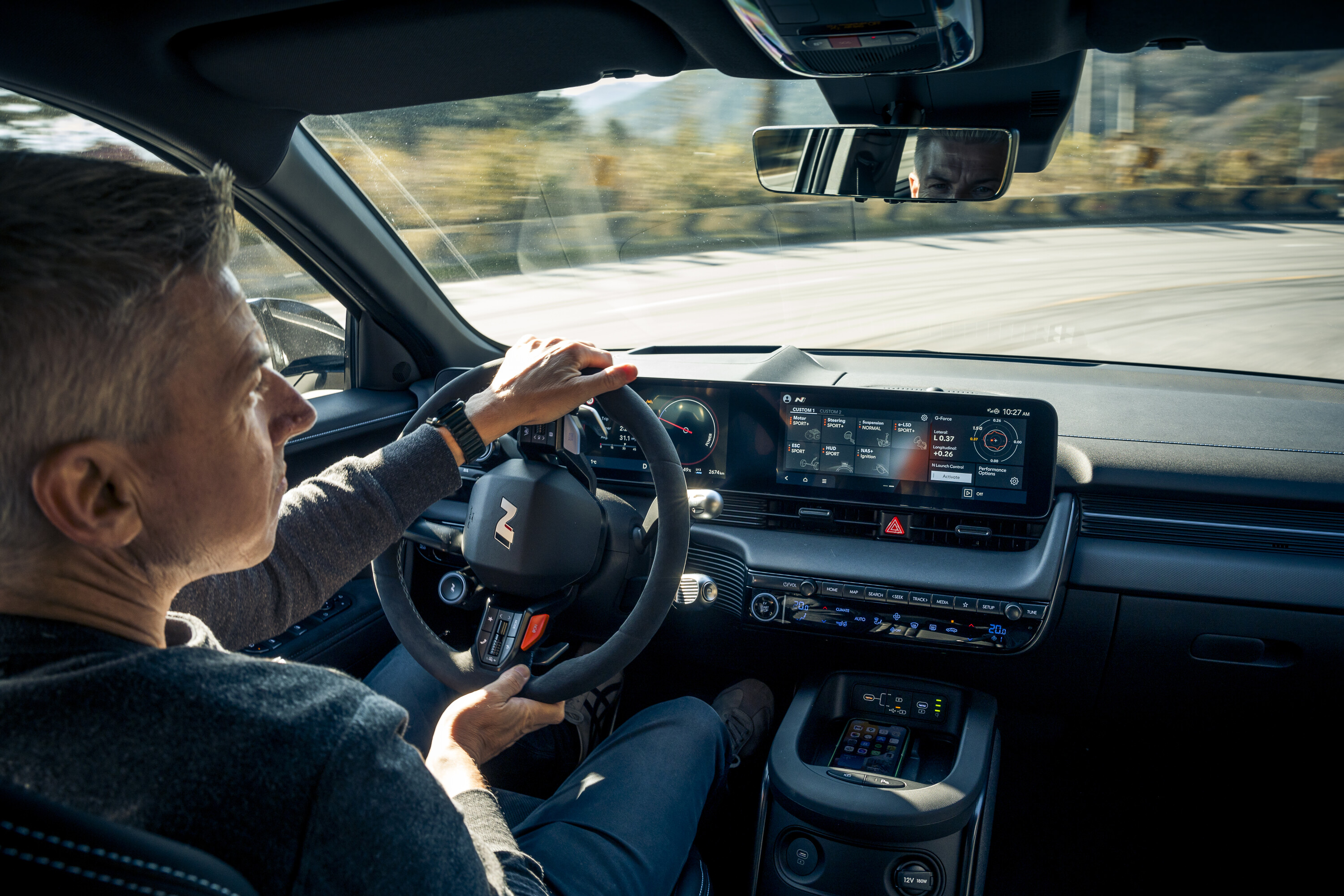
Working together to mimic the feel and sound of the 2.0-litre turbo petrol engine and eight-speed dual-clutch auto found in the i30 N, they’re far less gimmicky and far more entertaining than we were expecting.
The rorty engine note provided by ‘Ignition’ mode isn’t that surprising in this era of speaker-enhanced combustion motors; the clever part is how the car’s e-Shift software introduces slight jolts to what, for an EV, would normally be totally seamless acceleration as you flick the paddle levers for ‘upshifts’.
Most comically – in a good way – is the power delivery stutter if you bounce off the artificial 8000rpm ‘limiter’. (As an aside, the electric motors spin significantly faster than any conventional combustion engine – up to 21,000rpm.)
The sound isn’t limited to the cabin, either. External speakers – front and rear – can be switched on to try and fool passers-by.
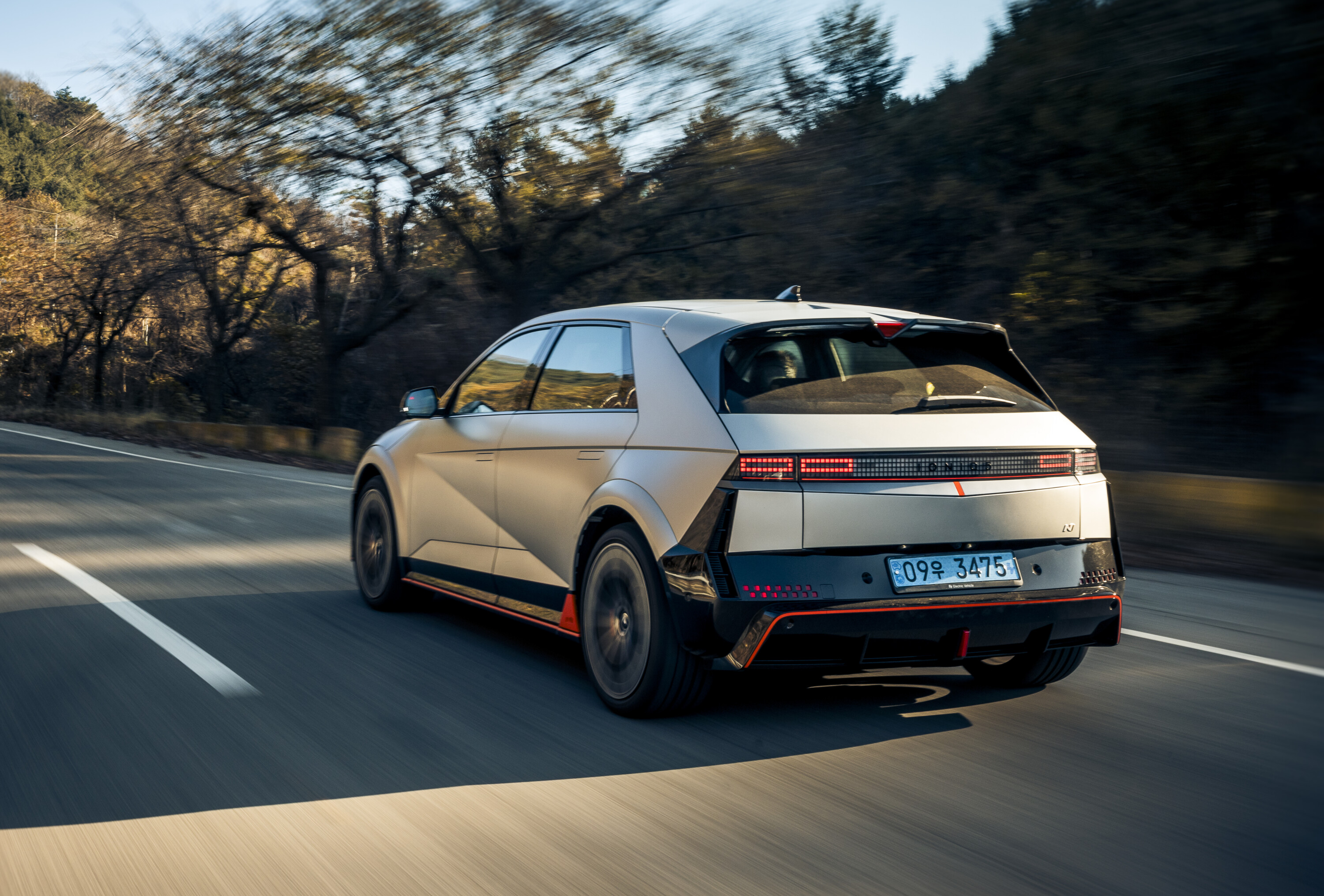
There are two other buttons of note on the steering wheel – and you can’t miss them; finished in the N-customary Performance Blue.
The left ‘Drive Mode’ button cycles through default Eco, Normal and Sport modes. The right-side ‘NGB’ stands for the aforementioned N Grin Boost.
Press this, floor the throttle, and the 5 N maximises power and torque for a 10-second burst – delivering a claimed 0-100km/h of 3.4 seconds.
Biermann and his N team, however, have consistently stressed that their cars are not about straight-line shenanigans.
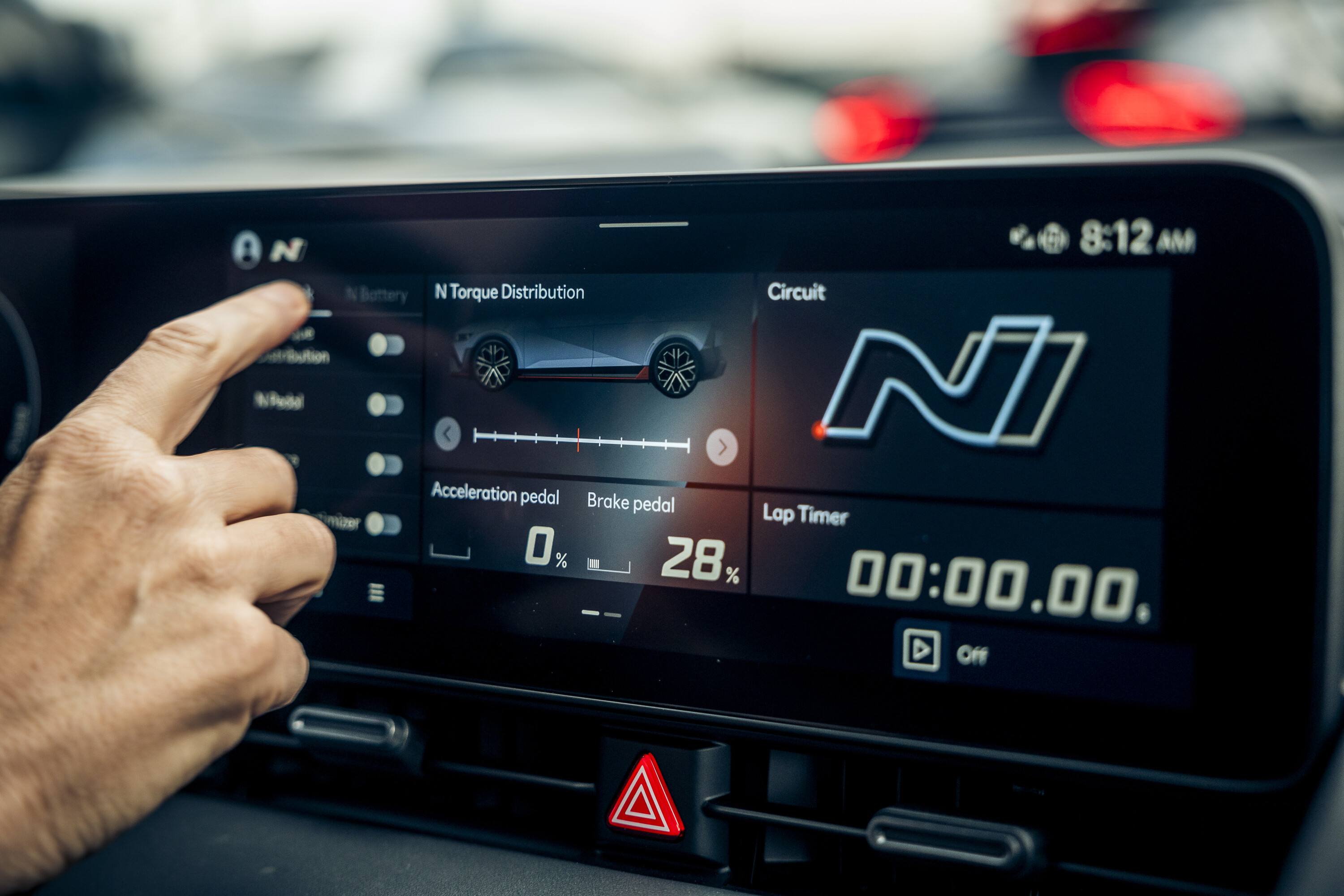
It wasn’t promising when we learned the IONIQ 5 N weighs about 2.2 tonnes – about 10 percent heavier than the regular 5 and 50 percent heavier than an i30 N auto hatch.
Yet that kerb weight proved hard to believe on our hillclimb. Hyundai’s first electric N model behaves very much like an i30 N on steroids – bigger and beefier (and sounding similar thanks to ‘Ignition’ mode) but capable of attacking corners with deft precision.
A rear motor that’s more powerful than the front motor lends an inherent rear-drive feel, though the driver can also adjust the AWD system’s torque distribution (yes, another area of customisation).
The steering, given more directness, is satisfyingly accurate – and the Alcantara covering is a tactile delight.

Overall, I was far less conscious about weight-transfer management than anticipated, even if trail-braking is a good tactic for achieving the best turn-in.
And on the subject of brakes, there are three ways of slowing the IONIQ 5 N (and it probably doesn’t hurt to have options for a car that can have you arriving at a corner at a very rapid rate).
There’s an N Regen regenerative braking system which can generate up to 0.6g of deceleration. And an N Pedal function with three different levels essentially brings extreme weight transfer – especially Level 3, we’re told – to help the car turn into corners.
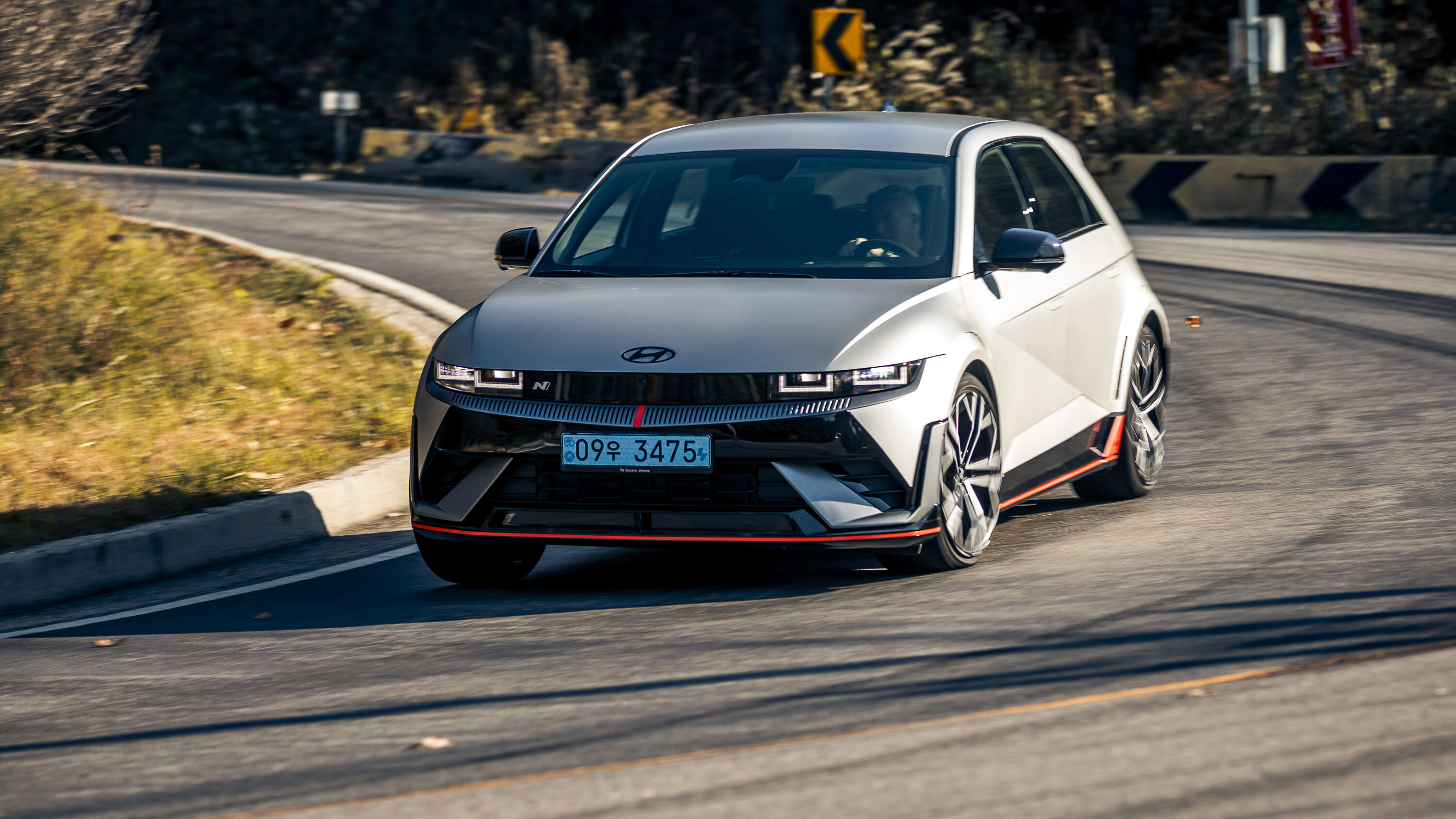
Hyundai recommends N Pedal for racetracks only – and is one of a few functions requiring the driver to click ‘Okay’ to a warning disclaimer – so we stuck mostly to the third stopping option: using the regular brakes.
We say ‘regular’, but the front brakes feature four-piston calipers and 400mm-diametre discs. The rear brakes aren’t small, either – 360mm, with single piston.
We’re pleased to report there’s good pedal feel to complement strong and progressive braking.
It’s too early to tell if the ICE powertrain impersonations will be a novelty that wears off, but we can say we found they complemented the driving experience – and even helped judge speed better than a regular EV.
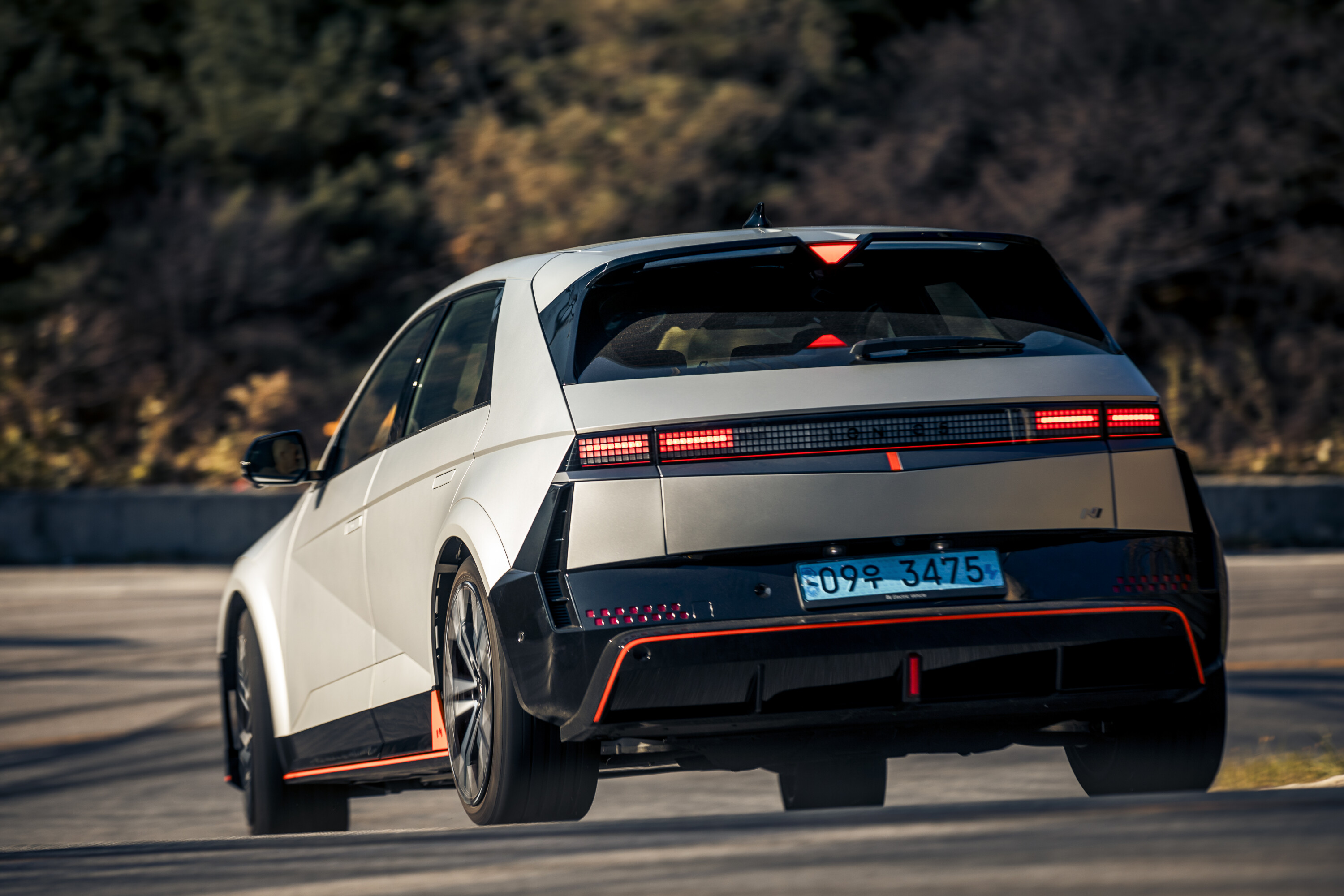
And over two days, I never felt inclined to turn the ‘Ignition’ mode off.
You can turn the 5 N into a whisper-quiet EV just like the regular IONIQ 5, and this helps deliver the dual character found in the best all-round performance cars.
As does the ride comfort. Although the 5 N is undoubtedly stiffer than the stock model, we found the suspension sufficiently relaxing during one long day. We’re told the Australian-spec tune will be softer again below 30km/h.
Criticisms are few, then, at this stage, though the N bucket seats are very hard, if excellent at keeping the driver in place when cornering.
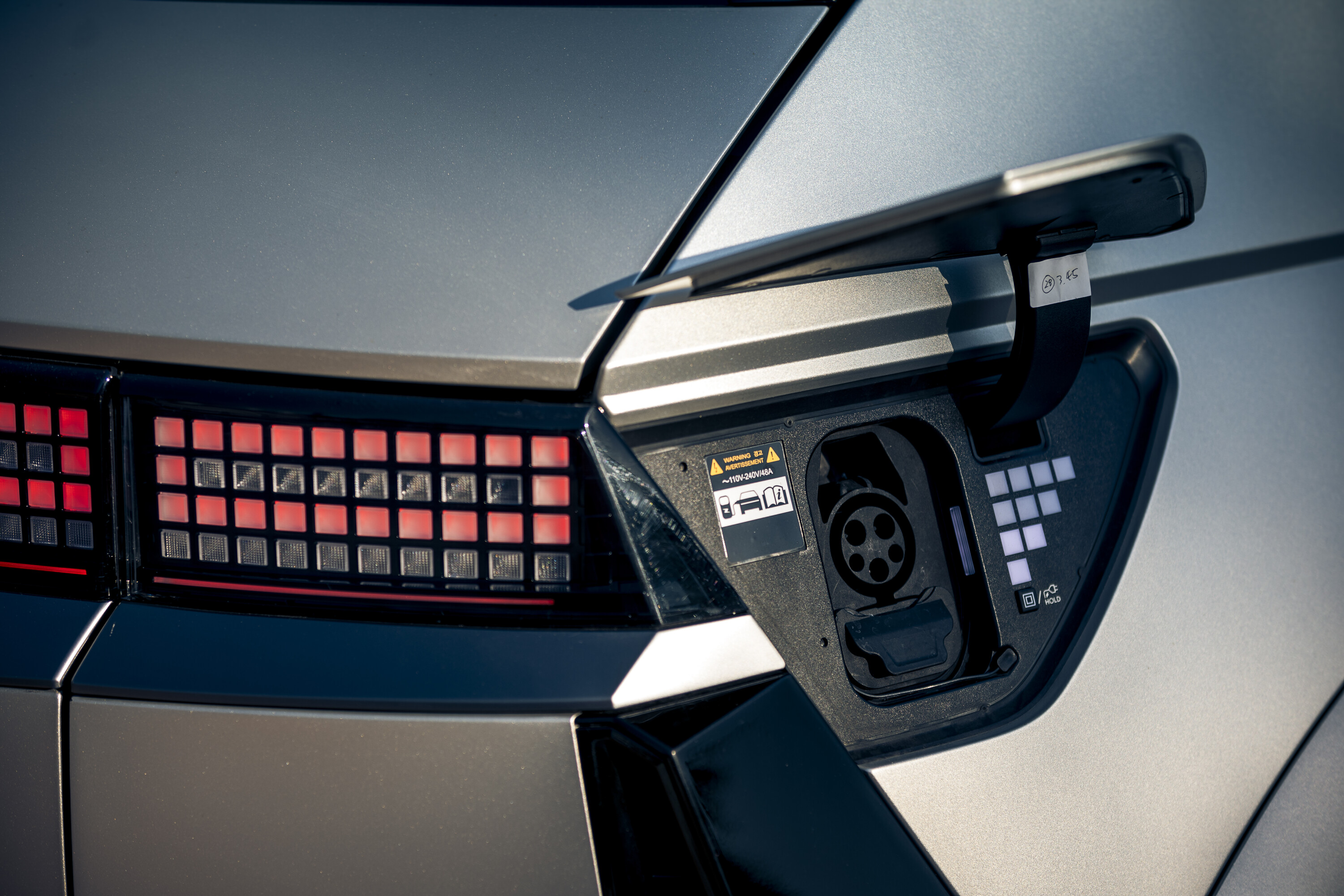
There’s a complexity to all the N modes and systems that demands homework from owners who want to get the most out of the car, and range is also a question mark.
Hyundai is estimating a WLTP-rated max distance of about 450km, but our experience in Korea suggested this figure could be highly optimistic – and we suspect impossible without driving like Miss Daisy in Eco mode.
A $111,000 price tag (or about $118K with on-roads) isn’t cheap, either (Australian deliveries start in Jan) – more than double the price of an i30 N and arguably not in keeping with Hyundai N’s mission to deliver “accessible performance”.
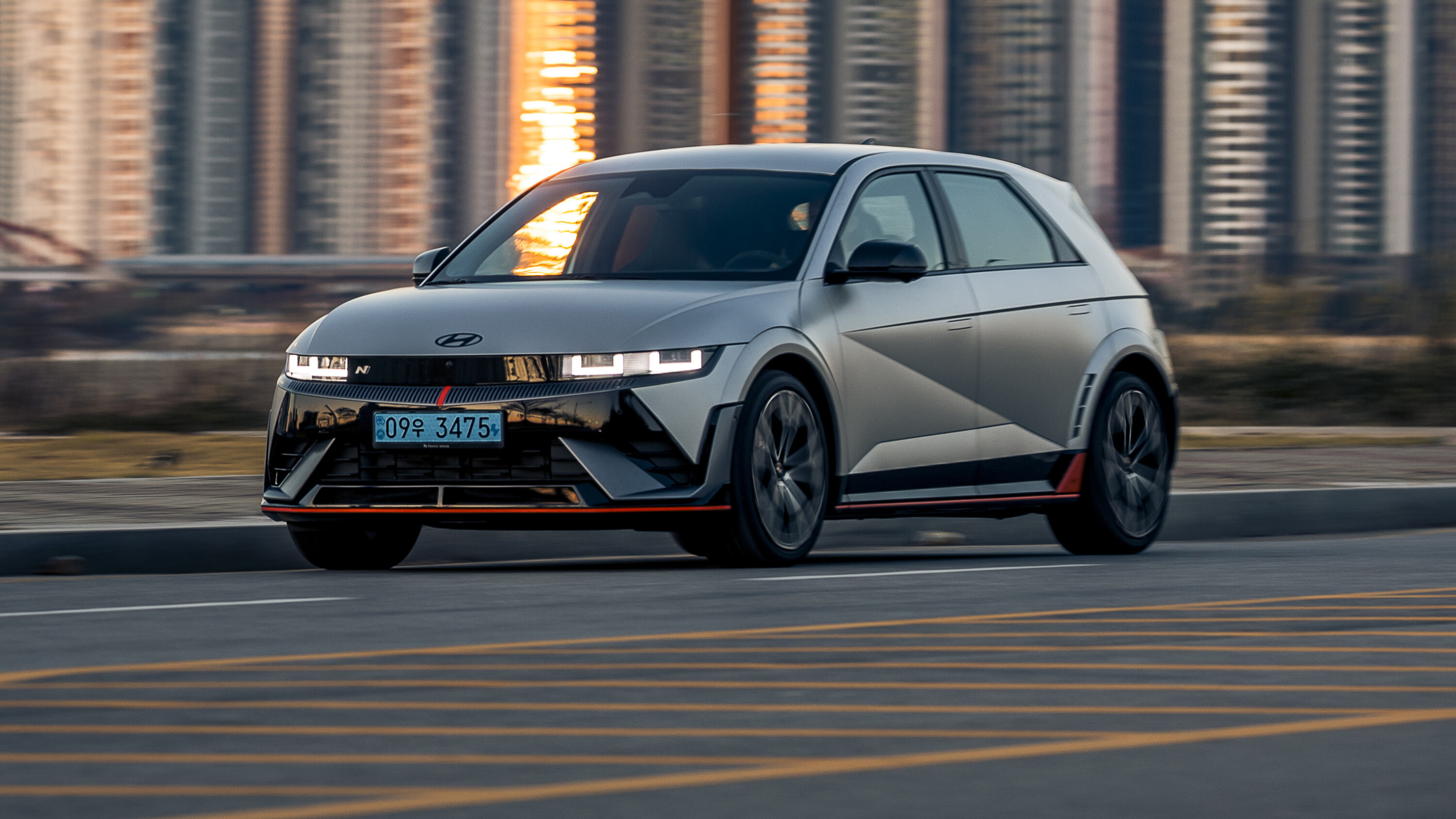
Perspective is always important, though, because the IONIQ 5 N delivers similar performance to a Porsche Taycan Turbo that costs about $300,000 (before adding the inevitably long list of options).
There’s more to the equation, too. Because while Hyundai’s performance division created one of the world’s best hot-hatches with its i30 N, it’s now built the world’s best electric driver’s car.

Hyundai IONIQ 5 N specifications
| IONIQ 5 N | Dynamiq RWD | Techniq AWD | Equip AWD | |
|---|---|---|---|---|
| Power/torque | 448kW/740Nm (478kW/770Nm on boost) | 168kW/350Nm | 239kW/605Nm | 239kW/605Nm |
| Range | 450km WLTP | 507km | 454km | 454km |
| Battery size | 84kWh | 77.4kWh | 77.4kWh | 77.4kWh |
| Charge capacity | 350kW | 350kW | 350kW | 350kW |
| Weight | ~2200kg | 2015kg | 2125kg | 2125kg |
| 0-100 | 3.4s | 7.3s | 5.1s | 5.1s |
Things we like
- Taycan Turbo-rivalling performance
- Enjoyable handling defies 2.2T weight
- i30 N powertrain mimicry adds to involvement
- Extensive driving-experience customisation
Not so much
- Multiple modes and menus can be overwhelming
- Efficiency likely to be a weak point
- Price tag far more than just a 'step up' from an i30 N
We recommend
-
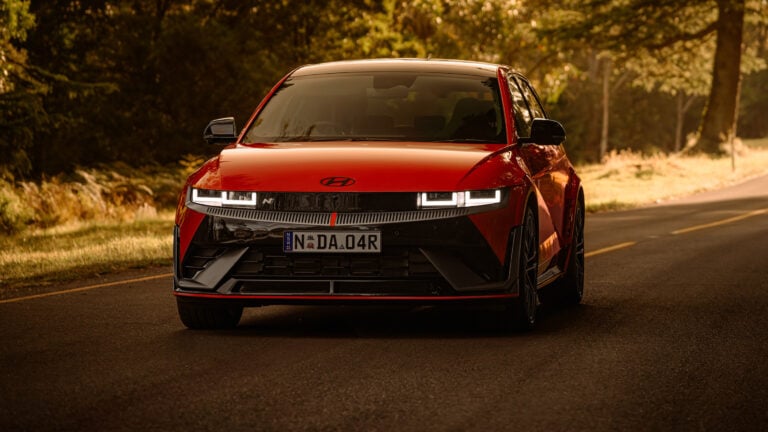 News
News2024 Hyundai Ioniq 5 N pricing: 478kW, $111k hero on sale now
Customers will have 12 hours to snaffle up the first batch of Hyundai’s high-performance EV, with orders opening on September 15
-
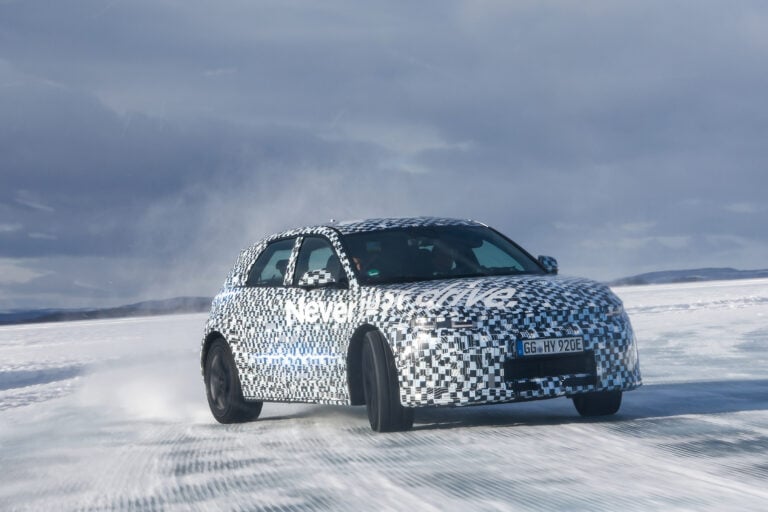 Reviews
Reviews2024 Hyundai IONIQ 5 N review: Prototype drive
With a brief to make the most fun-per-dollar electric car, Hyundai's N Division boffins are confident enough to let us loose in a prototype IONIQ 5 N – on ice!
-
 News
NewsNew car calendar 2026: All the new cars coming to Australia next year
Here’s the WhichCar by Wheels guide to all the new cars that will launch in Australia in 2026. Check back in regularly for updates...


